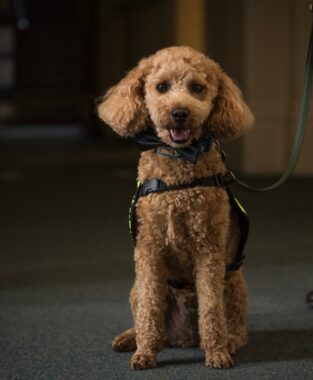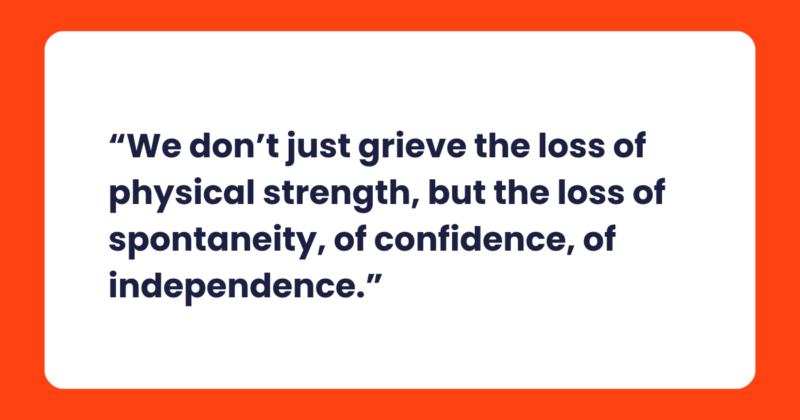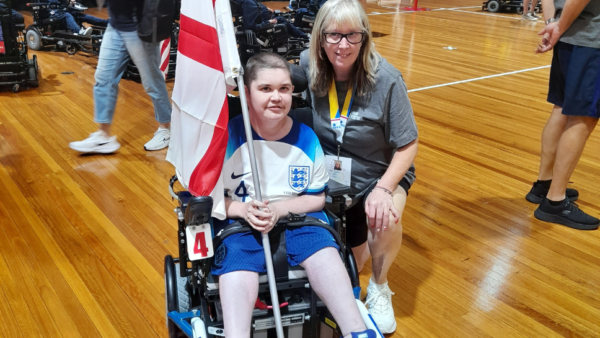For ‘National Love your Pet Day’, we’re putting a spotlight on how assistance dogs can be amazing companions and support for people living with muscle wasting and weakening conditions. Ann’s life was filled with love, fluffy cuddles and unwavering support when her assistance dog, Snoopy, came into her life. She shares why she decided to train her puppy as an assistance dog, the process, and how Snoopy is able to help her.
Training my own assistance dog changed my life
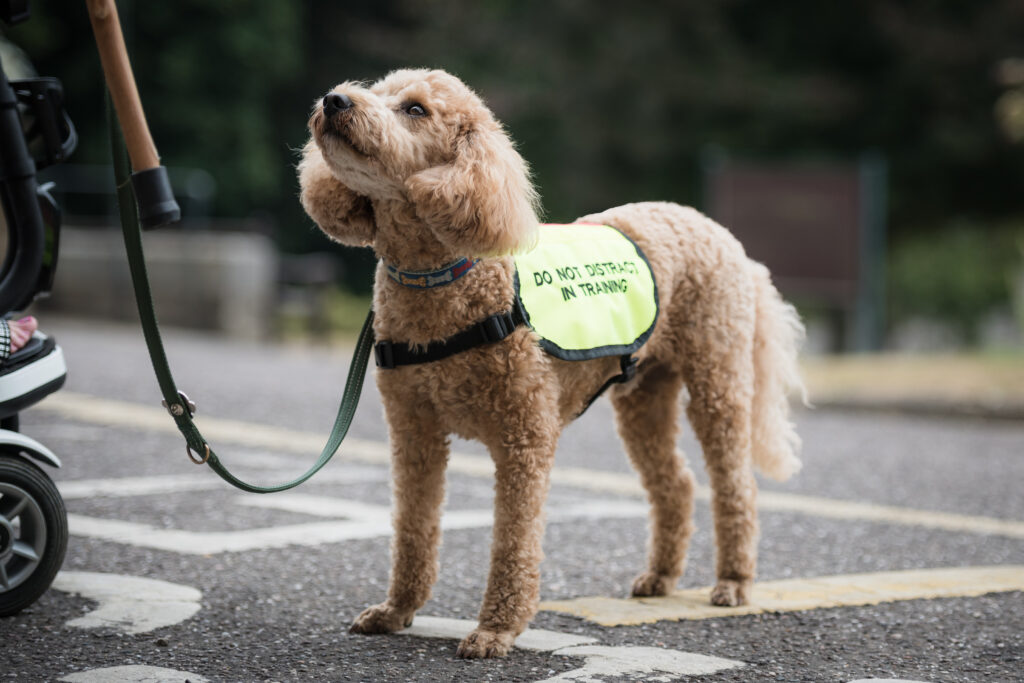
As a qualified assistance dog, I can take Snoopy anywhere — the supermarket, cafes, even dentists and doctors. His ability to stay calm in all these environments has been life changing. I never feel anxious when I go out knowing he’s with me. He’s not just a companion, he’s a helper. He picks up anything I drop, brings me my slippers, and even helps me with things like finding my keys.
But beyond all the tasks he supports me with, the best thing he does is to get me outside every day. Our “walks” (me on my off roading wheelchair with Snoopy running alongside) through muddy lanes and into the forest have become a vital part of my routine.
“He keeps me active, and instead of people staring at me, they now strike up a conversation with me about Snoopy, which really helps to feel less isolated.”
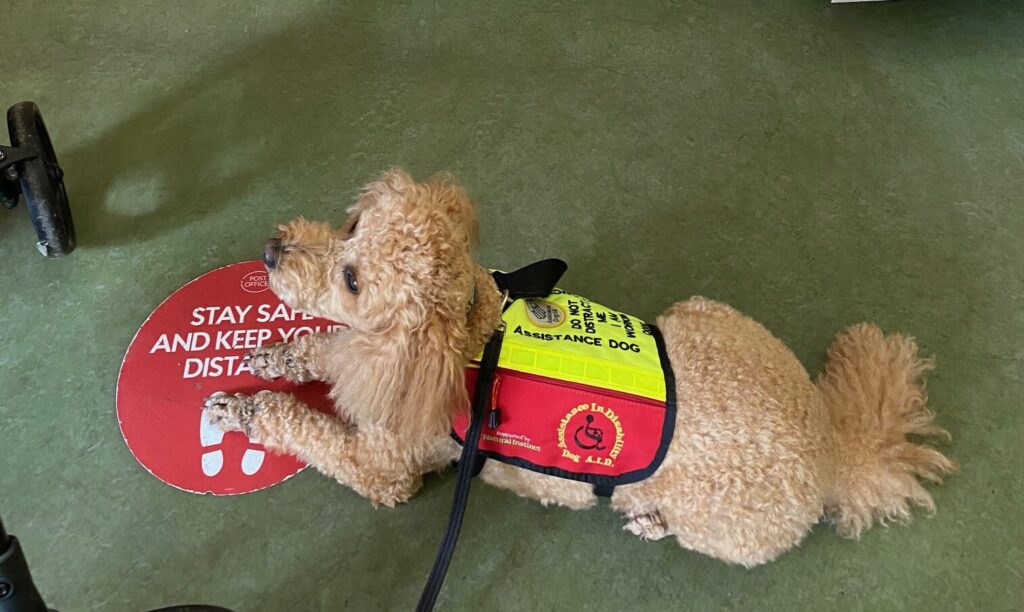
Finding a charity to help me train Snoopy
I didn’t necessarily have my mind set on an assistance dog when we got Snoopy, but thought it would be a bonus if he could help me with things I struggled to do. After we got Snoopy in 2020, I came across Dog Aid while researching ways to train an assistance dog
Once we’d been accepted onto the programme, we started training him at six months old. There was a probation period of six months to see if both of us were committed to the process and to make sure he was suitable to be trained. It was a long journey, and he was almost two when he passed the exams and became a qualified assistance dog, but it was so worth it.
Taking Snoopy through the training process
We had to teach Snoopy a range of tasks, like toileting on command, which is essential when you’re in public places. We also taught him to ignore food on the floor (which was harder than it sounds!) and even to pick up anything I dropped.
“He’s incredibly intuitive. Sometimes, I wonder if he’s training me rather than the other way around — especially when he brings me my slippers at night just to get a treat!”
The training stages were split into three levels, with each one growing more complex. Level one focused on basic obedience: sit, stay, recall. Level two involved more advanced tasks, including taking him off me in case of an emergency and doing it in a way that didn’t upset him. Level three was all about practical tasks, like taking him to a supermarket and making sure he didn’t touch anything on the shelves, even if there was food right in front of him. This is also the stage that is personal to you, where you can think about what tasks would be helpful in your day-to-day life. It was such an achievement for both of us when he passed — our hard work had paid off and I was incredibly proud.
Advice for people considering getting an assistance dog
Training an assistance dog is a huge commitment, but the bond you create with your dog and the sense of independence it gives you is priceless. You also get to train your dog in a way that suits both of your needs. If you’re willing to put in the time and effort, it can be life changing. You’ll have a companion who not only helps you in practical ways but also knows you inside and out.
